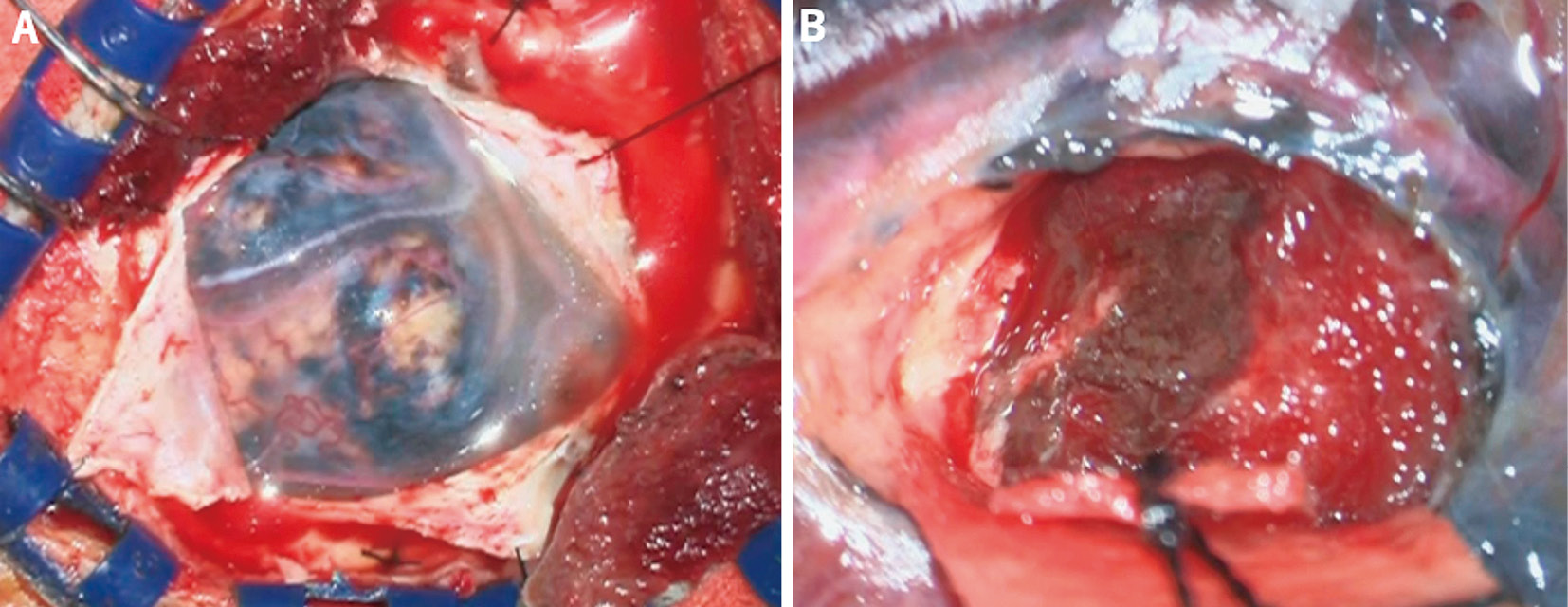- 著者
- Ichiro NAKAGAWA Masashi KOTSUGI Shohei YOKOYAMA Ryosuke MAEOKA Kentaro TAMURA Yasuhiro TAKESHIMA Ryosuke MATSUDA Shuichi YAMADA Fumihiko NISHIMURA Young-Soo PARK Hiroyuki NAKASE
- 出版者
- The Japan Neurosurgical Society
- 雑誌
- Neurologia medico-chirurgica (ISSN:04708105)
- 巻号頁・発行日
- pp.2023-0017, (Released:2023-06-08)
- 参考文献数
- 74
- 被引用文献数
- 1
Chronic subdural hematoma (CSDH) is a common pathology that typically affects the elderly in Japan, an aging society. Burr-hole irrigation is the standard treatment, but middle meningeal artery (MMA) embolization is a minimally invasive alternative. MMA embolization for CSDH has frequently been reported in recent years, and many technical innovations to improve clinical outcomes have been described. Embolic materials reaching more distally are found to avoid recurrences after MMA embolization. As a result, various studies have described the superiority of embolizing the anterior and posterior branches of the MMA, the advantages of embolic materials reaching beyond the midline, and a high degree of distal penetration using a "sugar rush technique" in which 5% soluble glucose is injected through an intermediate catheter during MMA embolization. Radiographically, reports have described the importance of a "bright falx" sign obtained by infiltrating embolic material beyond the midline and post-embolization enhancement of the dura, capsular membrane, septations, and subdural hematoma fluid as indicators of the spread of embolic materials. This review provides an overview of the current status and future challenges in MMA embolization for CSDH, focusing on technical aspects to improve clinical outcomes.
- 著者
- Kenta NAKASE Ryosuke MATSUDA Tomoya OKAMOTO Ichiro NAKAGAWA Maiko TAKEDA Katsumi SAKATA Hiroyuki NAKASE
- 出版者
- The Japan Neurosurgical Society
- 雑誌
- NMC Case Report Journal (ISSN:21884226)
- 巻号頁・発行日
- vol.10, pp.315-320, 2023-12-31 (Released:2023-11-11)
- 参考文献数
- 30
Meningeal melanocytomas of the central nervous system, although typically benign, rarely undergo malignant transformations. A 46-year-old man presented with headache and nausea 4 years after gross total resection of a craniovertebral junction meningeal melanocytoma at another hospital. The initial clinical course was previously reported.1) Computed tomography revealed the presence of multiple intracranial mass lesions. Furthermore, magnetic resonance imaging showed multiple intracranial lesions and meningeal dissemination. A biopsy was performed for a circumflex lesion located in the right frontal lobe. Pathological examination showed anaplastic changes and a Ki-67 index of 33%. Based on the pleomorphic changes and high mitotic activity, the patient was diagnosed with primary cerebral malignant melanoma. The patient received four cycles of nivolumab (80 mg) and ipilimumab (165 mg), followed by whole-brain radiotherapy (37.5 Gy). However, the disease progressed after the third cycle. Genome analysis revealed GNAQ Q209P and SF3B1 R625C mutations, but no treatments related to these gene mutations were available. Despite the seven cycles of nivolumab therapy, the patient eventually passed away 9 months after surgery. This case was a rare example of malignant transformation and leptomeningeal melanomatosis in a meningeal melanocytoma. It highlights the importance of careful follow up after gross total resection. Identification of molecular alterations can lead to better detection of melanocytic melanomas with poor prognosis and high risk of recurrence and metastasis. It can also facilitate the development of novel therapeutic options for these patients.
- 著者
- Kentaro TAMURA Ryota SASAKI Takafumi SAKAKIBARA Riju DAHAL Yasuhiro TAKESHIMA Ryosuke MATSUDA Shuichi YAMADA Fumihiko NISHIMURA Ichiro NAKAGAWA Young-Soo PARK Hidehiro HIRABAYASHI Hiroyuki NAKASE
- 出版者
- The Japan Neurosurgical Society
- 雑誌
- Neurologia medico-chirurgica (ISSN:04708105)
- 巻号頁・発行日
- pp.2022-0280, (Released:2023-04-13)
- 参考文献数
- 28
- 被引用文献数
- 1
A vagus nerve stimulation (VNS) device delivers electrical pulses to the vagus nerve at a rhythm defined by the duty cycle. The standard therapeutic range is advocated for an output current of 1.5-2.25 mA and a duty cycle of 10%. As the optimal settings vary from patient to patient, some patients may benefit from additional seizure reduction when stimulated beyond the standard range. A total of 74 patients (15 children aged <12 years and 59 adolescents/adults) who underwent VNS implantation between 2011 and 2020 and who were followed up for at least 2 years were included in this retrospective study. Stimulation parameters exceeding 2.25 mA of output current, 25% of duty cycle, and 0.5625 (2.25 mA × 25%) of current × duty cycle were defined as high stimulation. The proportion achieved an additional seizure reduction of 20%, and the 50% seizure reduction rate at the last follow-up was compared between adolescents/adults and children. Approximately 40% of patients in adolescents/adults treated with high stimulation experienced an additional acute effect, resulting in a 50% or greater reduction in seizures in almost all patients. Moreover, in adolescents/adults, 22.2%-41.9% of the patients were treated with high stimulation, and the responder rate was 69.5%. Conversely, the responder rate in children was 26.7%, significantly worse than that in adolescents/adults, despite higher stimulation. VNS with high-stimulation settings is effective for adolescent and adult patients with intractable epilepsy. Even high stimulation may not be effective in extremely refractory pediatric epilepsy with a high seizure frequency.


